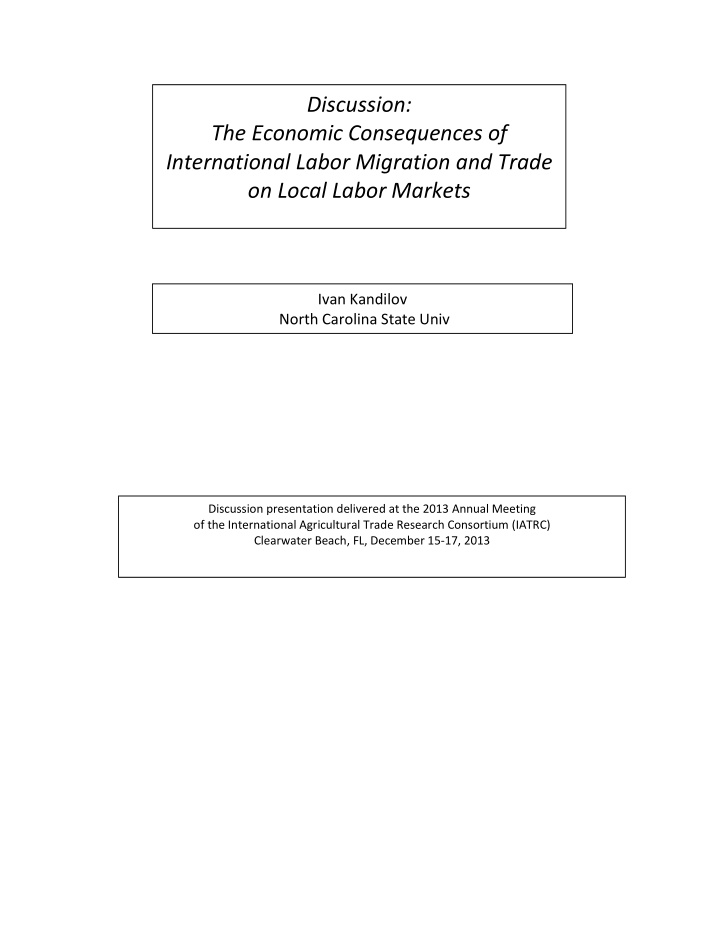



Discussion: The Economic Consequences of International Labor Migration and Trade on Local Labor Markets Ivan Kandilov North Carolina State Univ Discussion presentation delivered at the 2013 Annual Meeting of the International Agricultural Trade Research Consortium (IATRC) Clearwater Beach, FL, December 15-17, 2013
The Economic Consequences of International Labor Migration and Trade on Local Labor Markets: Discussion Ivan T. Kandilov North Carolina State University IATRC December 2013, Clearwater, FL
Focus on the U.S. agricultural sector • Farm labor force: approx. 1.1 million • U.S. agricultural sector enjoys a trade surplus (about $40 billion in 2012) • Exports – wheat, corn, soy beans, cotton (field crops, K-intensive) – China, Japan, Mexico • Imports – fruits and vegetables (high-value crops, L-intensive) – Mexico, Chile, Canada, China, EU
Focus on the U.S. agricultural sector • Difficult to evaluate the impact of increased agricultural imports on domestic agricultural labor markets – Trends following NAFTA similar to those prior to NAFTA – Also, trade diversion effects of agricultural trade barriers • Not enough research to date
Focus on the U.S. agricultural sector • Large fraction of crop workers (approx. 60%) are undocumented (primarily from Mexico) • About 25% are migratory • Supply of agricultural labor from Mexico is declining • Migration patterns changing • Substitution towards less L-intensive crops • Increased demand for imports
Impact abroad • Likely larger – agricultural labor force larger, so trade more important • Workers less spatially mobile • Agricultural trade barriers always difficult to negotiate • Domestic agricultural (support) policies also important (as well as food aid)
Recommend
More recommend